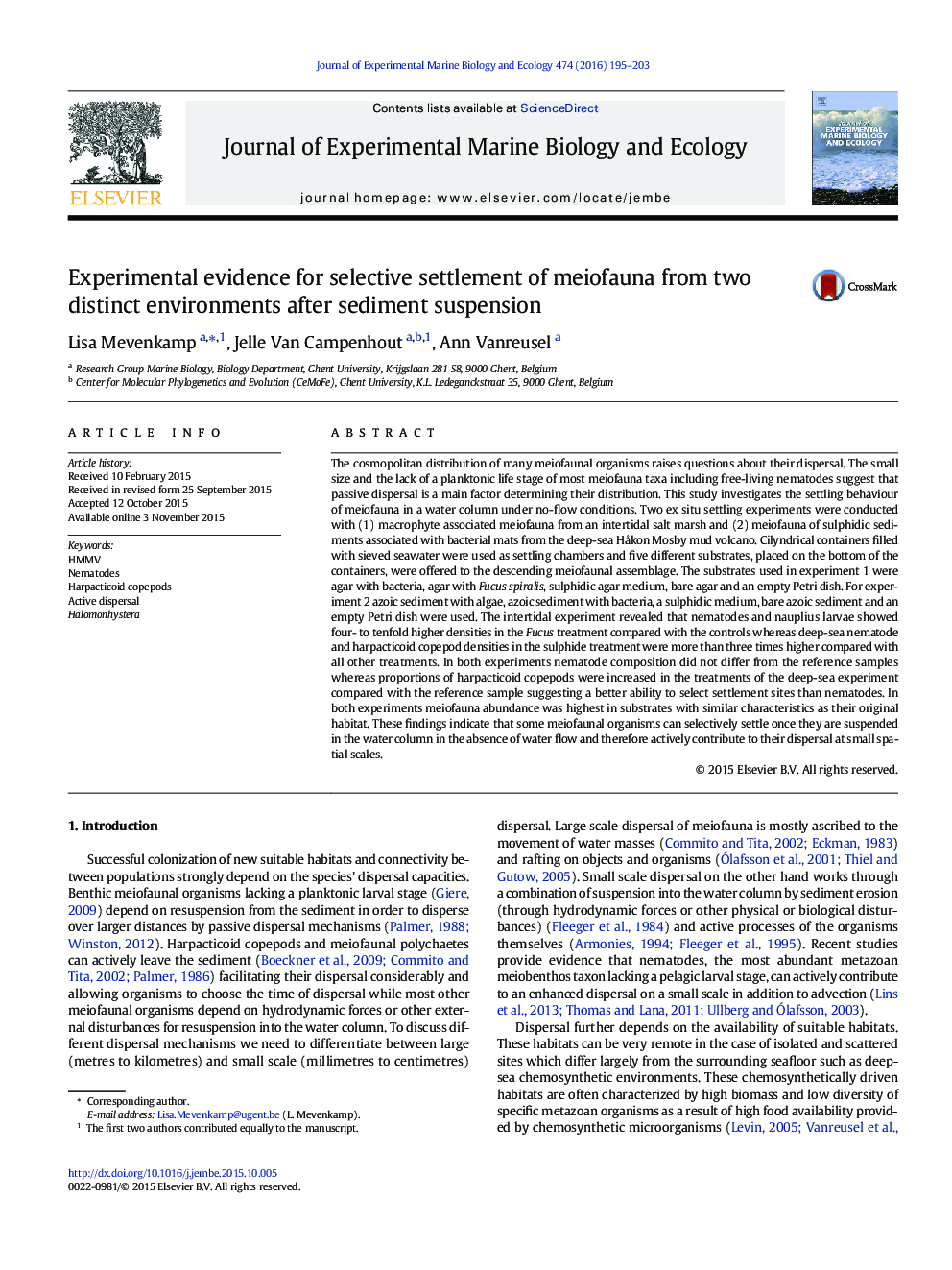| کد مقاله | کد نشریه | سال انتشار | مقاله انگلیسی | نسخه تمام متن |
|---|---|---|---|---|
| 4395321 | 1618401 | 2016 | 9 صفحه PDF | دانلود رایگان |
• Selective settlement of meiofauna was observed in an undisturbed water column.
• Nematodes, copepods and nauplii showed the most effective settlement.
• Treatments characterizing the source habitat were preferred indicating interactions of chemosensing and dispersal.
• A different response was observed in phylogenetically closely related species from different habitats.
The cosmopolitan distribution of many meiofaunal organisms raises questions about their dispersal. The small size and the lack of a planktonic life stage of most meiofauna taxa including free-living nematodes suggest that passive dispersal is a main factor determining their distribution. This study investigates the settling behaviour of meiofauna in a water column under no-flow conditions. Two ex situ settling experiments were conducted with (1) macrophyte associated meiofauna from an intertidal salt marsh and (2) meiofauna of sulphidic sediments associated with bacterial mats from the deep-sea Håkon Mosby mud volcano. Cilyndrical containers filled with sieved seawater were used as settling chambers and five different substrates, placed on the bottom of the containers, were offered to the descending meiofaunal assemblage. The substrates used in experiment 1 were agar with bacteria, agar with Fucus spiralis, sulphidic agar medium, bare agar and an empty Petri dish. For experiment 2 azoic sediment with algae, azoic sediment with bacteria, a sulphidic medium, bare azoic sediment and an empty Petri dish were used. The intertidal experiment revealed that nematodes and nauplius larvae showed four- to tenfold higher densities in the Fucus treatment compared with the controls whereas deep-sea nematode and harpacticoid copepod densities in the sulphide treatment were more than three times higher compared with all other treatments. In both experiments nematode composition did not differ from the reference samples whereas proportions of harpacticoid copepods were increased in the treatments of the deep-sea experiment compared with the reference sample suggesting a better ability to select settlement sites than nematodes. In both experiments meiofauna abundance was highest in substrates with similar characteristics as their original habitat. These findings indicate that some meiofaunal organisms can selectively settle once they are suspended in the water column in the absence of water flow and therefore actively contribute to their dispersal at small spatial scales.
Journal: Journal of Experimental Marine Biology and Ecology - Volume 474, January 2016, Pages 195–203
